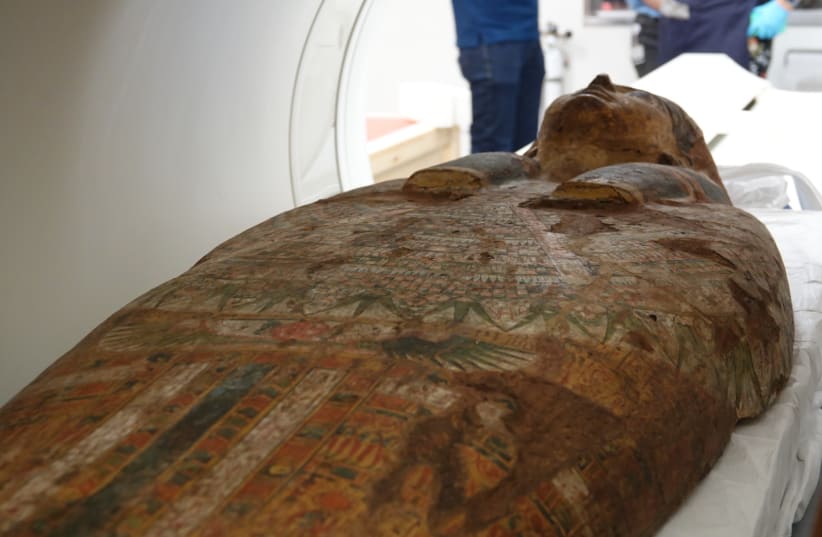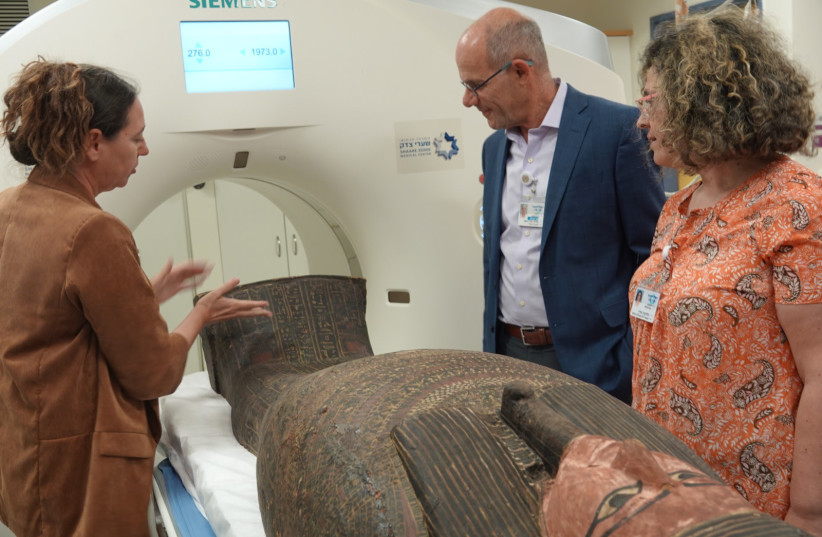In a complex operation that took several months to organize, two ancient Egyptian coffin lids from the Israel Museum’s collection were scanned with a highly sensitive computerized tomography machine (CT) at the Shaare Zedek Medical Center (SZMC) on Sunday.
The coffins, one dating back to 950 BCE and the other dated between the seventh and fourth centuries BCE, were examined in order to identify the operations performed by the craftsman during the manufacture of the lids thousands of years ago.
The examination was organized by the curator of the museum’s Egyptian archaeology department and the conservation staff with the goal of tracing the preparatory actions carried out by the craftsman before the cabinet lids were decorated.
The department’s curator explained that the scans made it possible to better understand the actions of the craftsman who created the coffin lids, thus making a significant contribution to the research they are conducting.
“We identified cavities in the wood that were filled with plaster as part of the preparation for the decoration of the coffins, as well as various parts that were cast entirely from plaster and not carved directly from the wood.”
The lid of the first coffin dates to around 950 BCE and belonged to a ceremonial singer and “god” Amun-Ra. The woman’s name, Jed-Mot, appears in the central text lines of the coffin that include a blessing for the deceased. The second coffin belonged to an Egyptian nobleman named Ptah-Hotep.
The coffin scanning process
The preparation for the inspection of the city lasted about five months and was done in cooperation and coordination between the staff of the Israel Museum and SZMC’s imaging department, which put aside several hours for the unusual scanning. Special boxes suitable for transporting the coffin lids were built according to the exact dimensions of each of the lids.
Shlomi Hazan, the chief radiologist who led the project, said: “It’s not every day that you participate in an encounter between glorious history and advanced medical technology. Our CT made it possible for us to scan every millimeter of the coffin lids in a program of two energy levels that is a unique feature of our scanner.”
The radiologists could see a separation between the different types of materials – wood, plaster and air spaces and the tree rings in cross-section and three-dimensional reconstructions. This will help the museum team discover the composition of the different materials.

